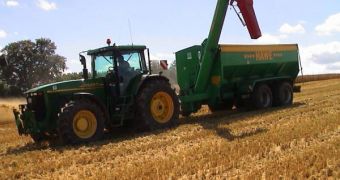A new report released on June 25th shows that the calorie requirements of the human population as a whole will sore by about 40 percent until 2050, at a rate that is completely unsustainable by existing agricultural practices and food production capabilities. Planning and serious investment in agriculture is therefore a must for the world as a whole, moving past the petty bickering between nations. Otherwise, billions of people living under the standard of poverty could die on account of lacking the basic necessities that keep each and every one of us alive today.
“We are at a crossroads in terms of our investments in agriculture and what we will need to do to feed the world population by 2050,” the co-author of the new report, Nelson Institute's Center for Sustainability and the Global Environment researcher David Zaks, explains. The paper was produced by the Deutsche Bank, together with experts from the University of Wisconsin-Madison's Nelson Institute for Environmental Studies. It also underlines the fact that, over the next few decades, global demands for food, fiber and fuel will grow at an alarming rate, if predicted population raise patterns continue.
“There will come a point in time when we will have difficulties feeding world population,” Zaks adds. The expert is a graduate student whose research focuses on global agriculture, in terms of visible patterns, trends and processes involved with feeding the Earth's population. According to estimates, the world's population will exceed nine billion people by 2050, a 2.5-billion increase from the numbers today. Additionally, the growing threats of climate change and global warming will further aggravate the situation, causing even more people to become poor and starve.
“The solution is only going to come about by changing the way we use land, changing the things that we grow and changing the way that we grow them,” Zaks believes. New types of technologies, used on land that is now just marginally included in the crop planning, could represent a possible solution to the problem. However, even these actions will only help us in the short term, the analyst says. “First, we have to improve yield. Next, we have to bring in more land in agriculture while considering the environmental implications, and then we have to look at technology,” he explains.
“What is required to meet the challenge of feeding a growing population in a warming world is to boost yield through highly sophisticated land management with precision irrigation and fertilization methods. Farmers, markets and governments will have to look at a host of options including increased irrigation, mechanization, fertilization and the potential benefits of biotech crops,” Nelson Institute graduate Bruce Kahn, who is now a senior investment analyst at the Deutsche Bank, adds.

 14 DAY TRIAL //
14 DAY TRIAL //